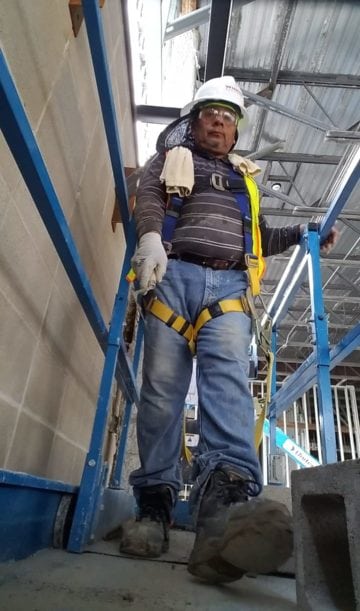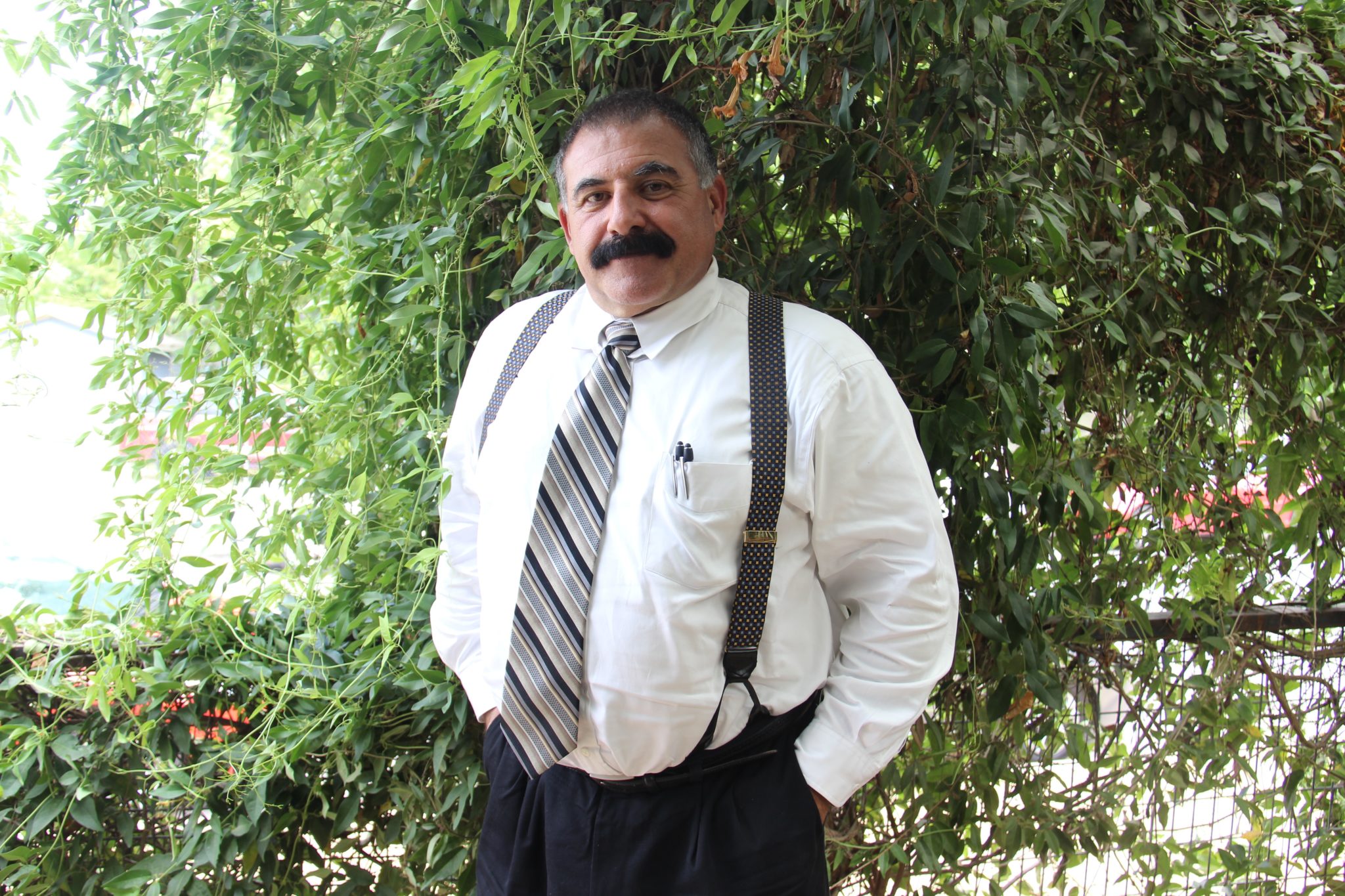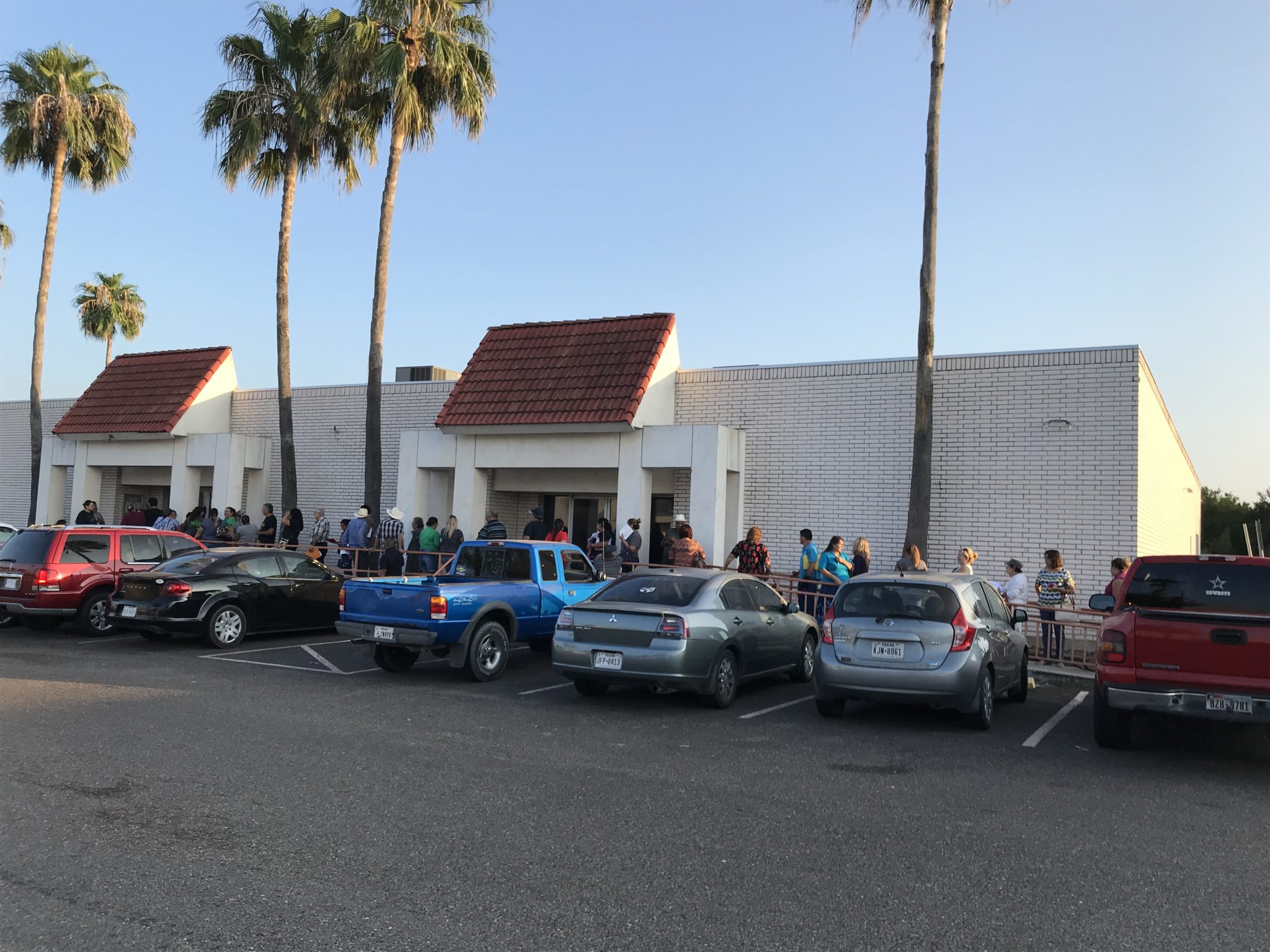
Climate Change is Making Texas Summers Worse. Here’s Who That Hurts the Most.
Outdoor workers and the most vulnerable Texans — the poor, disabled and elderly — are feeling the brunt of this summer’s punishing heat.
–
by Sophie Novack, Naveena Sadasivam and Gus Bova
August 20, 2018
Over the last few months, a wave of extreme weather events has engulfed the planet. Temperatures reached record highs, shutting down electricity for tens of thousands in Southern California and hospitalizing more than 30,000 people with heatstroke in Japan. Wildfires are raging in California, Greece and Sweden. Meanwhile, Japan’s historic rain in July led to 220 deaths. In southern Laos, heavy monsoon rains pushed a dam to collapse, sending millions of gallons of water through villages downstream and killing at least 31 people.
In all these cases, scientists believe climate change is playing a role, fueling record summer temperatures, worsening floods and intensifying wildfires. In Texas, too, we’ve been feeling the effects of living in a warming world. Texans are used to the heat — we can be downright masochistic about it — but climate change is making extreme temperatures more common. The state has warmed between 0.5 and 1 degree Fahrenheit in the last century. At Enchanted Rock State Natural Area near Fredericksburg, officials reported in July that the pink granite rock’s surface temperature reached 133 degrees. Texas’ electric grid felt the strain, too: Demand for electricity rose to 73,000 megawatts in July, beating a 2016 record of about 71,000 megawatts.
For many Texans, the record heat is merely an inconvenience. Most of our cars, homes and places of work have air conditioning. But for those who work outdoors and for the most vulnerable — the poor, disabled and elderly — the summer can be dangerous. Excessive exposure to heat can cause problems ranging from dizziness to severe organ damage to death.
With several weeks of brutal summer still to come, we spoke with Texans who have struggled to cope with the heat. Here are their stories.
Homeless in Austin
In the summer, the heat usually keeps Glinda Jean Thompson awake most of the night. She curls up in a corner outside a UPS building in downtown Austin, often with her chihuahua, Cheeto, and tries to get a few hours of rest before she packs up shortly after sunrise. Thompson, 50, has a host of psychiatric disorders — anxiety, schizophrenia, depression and bipolar disorder — that can make sleeping and dealing with the heat especially difficult. “It just makes me feel tired and exhausted,” she said. “Because of the heat, maybe by 1 or 2 a.m., that’s when it really starts cooling off.”
Thompson can expect to face more warm nights. With climate change, nights are warming faster than days. Historically, Austin experiences nights where the low is above 80 only twice every 10 years, but by 2011-2040 researchers project that’ll happen three to eight nights a year. By the end of the century, under a high-emissions scenario, there could be 85 such nights per year.

For about six years, Thompson has lived on the streets of the Texas capital, where she says she’s felt the summers get progressively hotter. So she’s adopted a routine to stay cool. Sometimes she dips into one of a small handful of cafes and restaurants downtown where the owners know her and let her stay for a short break from the heat. Other times, she’ll take the bus north to a Wendy’s or south to a 7-Eleven, where the managers let her sit in the air conditioning for a couple hours. If she’s lucky, they’ll let her fill her Welch’s apple juice jug with water. When she’s not able to be inside, Thompson tries to find shade. Otherwise she starts feeling dizzy and short of breath. Last summer, she says, she passed out from the heat and woke up two days later in the hospital. From May to mid-June this year, 174 people in Dallas County alone were hospitalized for heat-related illnesses.
On a hot afternoon at the end of July, Thompson waits outside a homeless resource center in downtown Austin. It’s nearing 100 degrees and the street is lined with people, some with wet towels wrapped around their necks and foreheads. One woman crouches under a broken umbrella she’s positioned against the building to create shade, holding two one-gallon jugs she filled with ice at the nonprofit across the street.
“You have to just take one day at a time,” Thompson says, shaking her head.
Construction Work in Houston
Martin Mares first got heatstroke on the job in the late ’90s. He was roofing a house alone in north Houston at the height of summer when suddenly he was unable to continue. “You get confused, nauseous; you start shivering, even though it’s 100 degrees out,” says Mares, now 60. Fortunately, he was able to get down from the roof and find shade, but he couldn’t drink water without throwing it up. Mares couldn’t work for three days. But he never went to the hospital, because he couldn’t afford it.

Heatstroke can be fatal, and Mares, who is originally from the Mexican border city of Piedras Negras, has suffered it twice in the 32 years he’s built homes in Houston. Construction workers often labor for hours in high heat and humidity without a break, outside in direct sunlight or indoors in poorly ventilated spaces without air conditioning. The urge to overwork is especially strong for immigrants, he says, who are anxious to send money back home and may lack labor protections. Mares says some bosses contribute to a macho culture where taking breaks and staying hydrated are seen as weaknesses.
The climate in Houston, where about one-quarter of Texas’ construction workers are employed, is particularly dangerous. The city’s notorious humidity combines with typical Texas heat to create a “sense of being in a furnace,” where sweat doesn’t evaporate and the body can’t cool itself, says Arlo Weltge, an emergency medicine physician who has practiced in Houston for more than 30 years. During midsummer months of what he calls “ugly heat,” Weltge has treated patients with core body temperatures of 108 degrees, which in severe cases can cause devastating multi-organ failure.
Meanwhile, a recent report from workers’ rights groups found that more than a third of construction workers in Houston don’t have drinking water provided on their worksite, and 40 percent have no employment benefits. A 2017 study also found that temperatures in Harris County are expected to rise 4 degrees by 2100 and the mortality rate will increase by 25 people per 100,000, putting outdoor workers like Mares even more at risk.
After decades on the job, Mares has learned to manage the heat on his own. He drinks water every 20 minutes and lies in the shade during breaks with a wet cloth on his forehead. He doesn’t attempt 12-hour work days like he used to. Mares knows the risks if he isn’t careful: One friend had two cousins die from heatstroke.
Incarcerated in Navasota
When the stifling heat became unbearable and sweat soaked through his sheets, Charles Malouff would try to sleep on the cement floor of his prison dorm. His fellow inmates in the Wallace Pack Unit in Navasota, he recalls, also chose to “share the floor with cockroaches” over lying in their bunks, because the ground was slightly cooler. In lawsuit filings, prisoners reported summer temperatures that regularly rose to more than 100 degrees inside their un-air-conditioned living spaces.
“[Prisoners] are still humans,” Malouff says. “And they don’t deserve some of the things they’re being subjected to.”
Malouff, a former police officer who was convicted of fraud in 2013 and released on parole this year, was involved in the four-year lawsuit against the Texas Department of Criminal Justice over inhumane heat conditions in the Pack Unit. Temperatures inside the dorms, whose metal walls are poorly insulated, could be even hotter than outside, the lawsuit alleged. At the peak of summer, the buildings “hold heat in like a parked car.”

Fans merely moved hot air around, and cool showers were often unavailable, Malouff says. State prison authorities told inmates to drink lots of water and presented it as a solution in court, but the judge found that the water at the Pack Unit had levels of arsenic several times higher than allowed by the Environmental Protection Agency, posing serious long-term health risks.
A federal judge ruled the heat conditions in Pack Unit constituted “cruel and unusual punishment,” and this May approved a settlement mandating air conditioning be installed in the facility. While the Pack Unit now has air conditioning in housing units, nearly 75 percent of prisons across the state still don’t. Almost two dozen prisoners have died from extreme heat across the state in the last two decades.
Jennifer Erschabek, executive director of the Texas Inmate Families Association, says many Texas prisons remain stiflingly hot in the summer. The heat can make it impossible to sleep, leaving inmates exhausted and nauseous, says Erschabek, whose son is incarcerated in the Ernestine Glossbrenner Unit. “It’s a living hell during summer months.”
Poor in the Rio Grande Valley
On any given weekday, people start waiting outside the Hidalgo County Community Service Agency in Edinburg at 3 a.m. In line are low-income families struggling to pay their electricity bills or seeking assistance in purchasing air conditioners for their homes. Many hold bills indicating their electricity has been disconnected.
When Jaime Longoria, the executive director of the agency, opens the doors at 8 a.m., he knows he’ll have to turn away dozens. The federally funded agency is mandated to serve only those who are below 150 percent of the poverty level. He also can only take 50 appointments a day. Every day Longoria hears heartbreaking stories from residents struggling to pay their bills: a cancer patient going through chemotherapy, an 80-year-old single grandmother with kids in tow and a disabled resident who can’t stand in line for a long time.

In one case, Longoria’s agency helped a 14-year-old boy who is confined to bed and breathes with a respirator. Before Longoria intervened, he lived in a 6-by-10-foot room in a mobile home without an air conditioner. The room barely had enough space for his hospital bed and nurse, Longoria said. The wiring in the home was also unsafe: Every time an appliance was plugged in, the rest of the house went dark. Longoria’s agency installed an air conditioner and found electricians to fix the wiring pro bono. The agency also helps with monthly utility payments.
“His condition is so much better off just from a bedsore perspective,” Longoria said. “[I can imagine] him laying in bed and sweating.”
Residents of the Rio Grande Valley are no strangers to extreme heat. The region is one of the warmest in the country, and climate change is driving temperatures up. A study by Climate Central, a nonprofit that studies climate change, found that by 2050 Brownsville and McAllen will have a heat index above 105 degrees for more than half of the year.
Longoria’s agency purchases air conditioners for vulnerable families — those with members who are disabled or over the age of 60. For others, the agency provides air conditioners when the temperatures are above a certain threshold.
Longoria estimates that 100,000 families in Hidalgo County are eligible for the program. But his budget is never enough. Last year, the agency received $3.6 million in funding and served about 6,000 families. This year, it got $5 million, but Longoria says those funds are “still a drop in the bucket.” After Lite-Up Texas, a state program that provided assistance with electricity bills to low-income families, ran out of money in 2016, Longoria says the demand has only increased. “Lite-Up went away … [and] we have gotten a huge deluge of clients,” he says.
Ranching in Waco
For rancher Robert Cervenka, the prolonged heat this summer is more than just a nuisance — it’s changed when and how he works. At 87, Cervenka still takes care of more than 800 acres of land and 125 head of cattle near Riesel, just east of Waco. He can no longer work all day like he used to. Cervenka takes frequent breaks and tries to work in the shade when he can. Many days he wakes up early to work while it’s still relatively cool. Most of the time, he’s just tired, and the heat doesn’t help.
In July, temperatures in Waco rose to 114 degrees, an all-time high and two degrees higher than the city’s previous record from 1969. The city hit 100 degrees or more 22 days in July. Waco has received scattered showers this month, but experts say it’ll take a foot of rain to pull the region out of drought.
Cervenka’s cattle are already feeling the effects of the withering temperatures. To protect themselves from the heat, the cattle cluster under the trees. Sometimes they cool off by stepping into the water tanks they drink from, but the levels in the tanks are dropping quickly. “They suffer,” Cervenka said.

A combination of high temperatures and insufficient rain have also burned the grass on his property to a crisp. Last fall was parched, too, so the clover and winter grass that he usually bales and stockpiles are running low. Instead, Cervenka is feeding the cattle liquid supplements and cubes to tide them over. He wants to sell some of the cattle, but the market is down and he doesn’t expect to get a good price.
Cervenka says he believes that climate change is causing more extreme weather events all over the world. But when it comes to Texas, he doesn’t think it’s any hotter now than in years past. “It’s always hot,” he says. In any case, he’s thankful for Texas’ heat because it helps “keep the damn Yankees out.”


